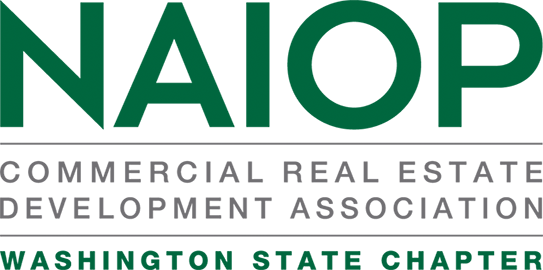
Programming Committee Co-Chair Ed Scherer introduced the October panel about augmented, virtual and mixed reality technologies and how they are changing the commercial real estate industry. These technologies are becoming more and more seamlessly embedded and integrated into the design and delivery process, providing immersive experiences, and streamlined and more efficient construction and maintenance.
The three speakers talked about the technologies: Orlando Orozco, Design Technology Specialist from CallisonRTKL, Marc Kinsman, Immersive Technologies Developer from Mortenson and Charlie Choo, Partner and COO from Studio 216.
Orlando is CallisonRTKL’s Design Technology Specialist and he talked about the architectural and design application of VR and the “increasingly attainability of virtual reality.” He gave an overview of VR on everything from the platforms and portability to the setup of the technology (so easy that “even VP’s can do it!”). The adoption of this emerging technology provides rapid ideation and, as a rapidly evolving technology itself, Orlando was able to show the crowd the use of QR codes for 3D views as a low threshold to enter the VR space. He continued to show the crowd the evolution and scale of the VR space as it is today. Collaboration and multi-user capability is here to stay and immensely helpful in the architecture and design field. Orlando showed some high-level applications and talked about CallisonRTKL’s recent use of virtual reality for their clients in the United States, Canada and Japan, and provided a video of some fun client reactions (sugoi!).
Marc is Mortenson’s Immersive Technologies Developer and he talked about customer-focused virtual insights in the realm of construction. He focused on the industry-wide struggle in design and communication and how that misunderstanding can be reduced with VR. He pointed to Augmented Reality as a viable solution for the construction industry as VR cannot realistically be on the job site right now. He then gave a demo of an AR overlay to a job site with “integrated work planning” that showed comprehensive scheduling, employee and equipment data, weather and any additional information you could want or need, which was incredibly dynamic. He also showed multiple service, safety and facilities training uses with AR and talked about some challenges like accuracy and hardware. Marc showed an example of the UW Computer and Science Engineering Building where overlays and markers are used to show students and passers-by more about a job site that’s usually blocked by fences or can be quite ambiguous to the untrained eye. The various examples showed ways AR solutions can pair well with construction industry needs. Marc also touched on hype cycles, which we could all identify with.
Charlie is Studio 216’s COO and talked about mixed reality in real estate and their enterprise solution, Altoura. His focus was the challenge of full-scale physical design mock-ups and how one class of their tools solves this with “full scale, networked, extended reality.” Charlie showed their work with the Microsoft stores and Arrive projects and performed a live demo using the Microsoft HoloLens. Charlie recommended a few things when working with mixed reality – which also rings true in a lot of applications and in any reality in this author’s opinion – Design Immersion, Interaction and Collaboration. Charlie’s example of a failed Pikachu model as an analogy to what we sometimes expect of what mixed reality can do for us and what it really can do, got a lot of laughs. Charlie’s live demo went without a hitch and demonstrated some really cool uses of the technology.
There were several questions from the audience about adoption, user-friendliness, use of VR by the city in permitting, the use of VR in community engagement, and more. Attendees were able to jump into VR and AR experiences in the lobby after the presentations as well.
Be sure to check out the slides from the morning’s presentation, as well as the final attendance list, via the NAIOPWA app. Look for the paperclip icon (materials) for the 2018 October Breakfast.
This article was written by NAIOP Washington State and Marcom Committee member Sarah D. Fischer.
